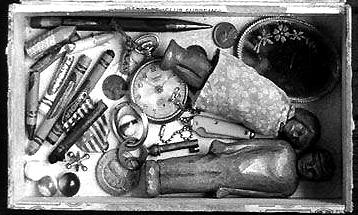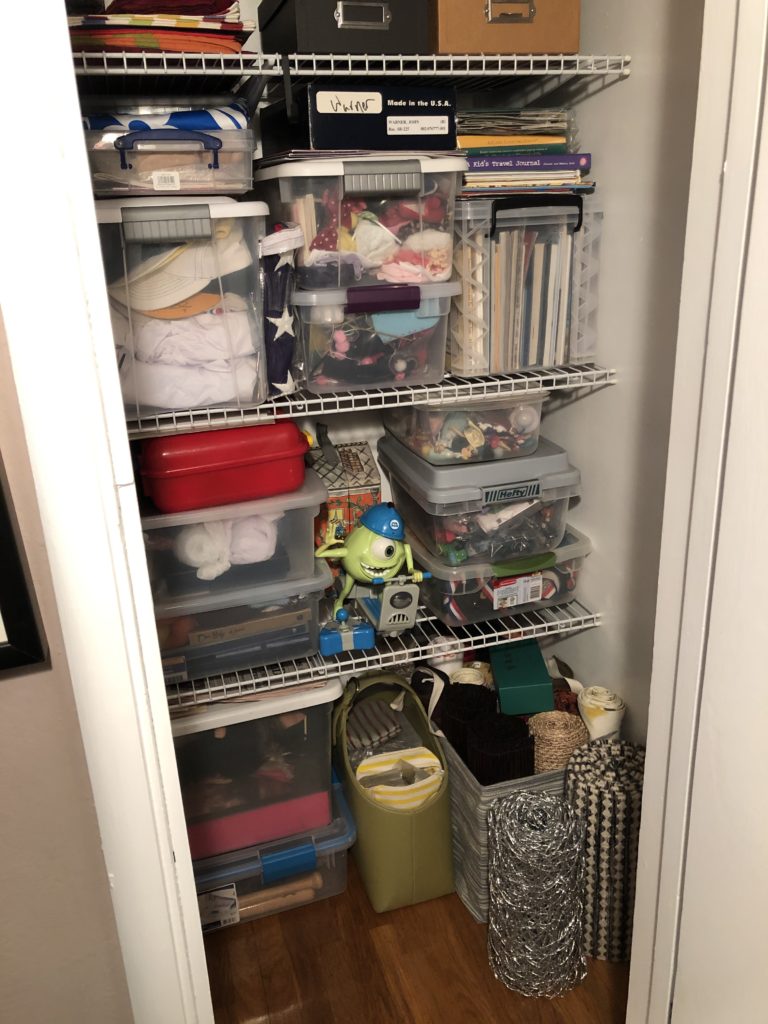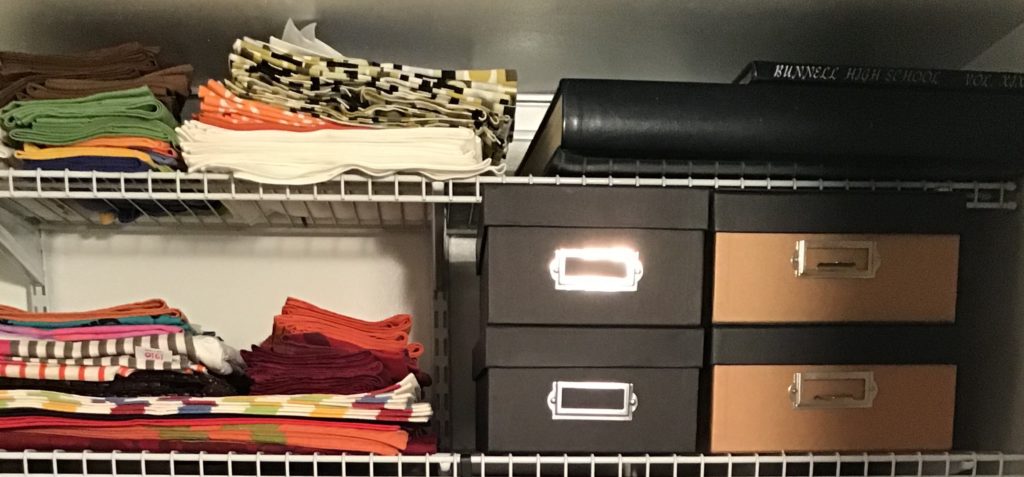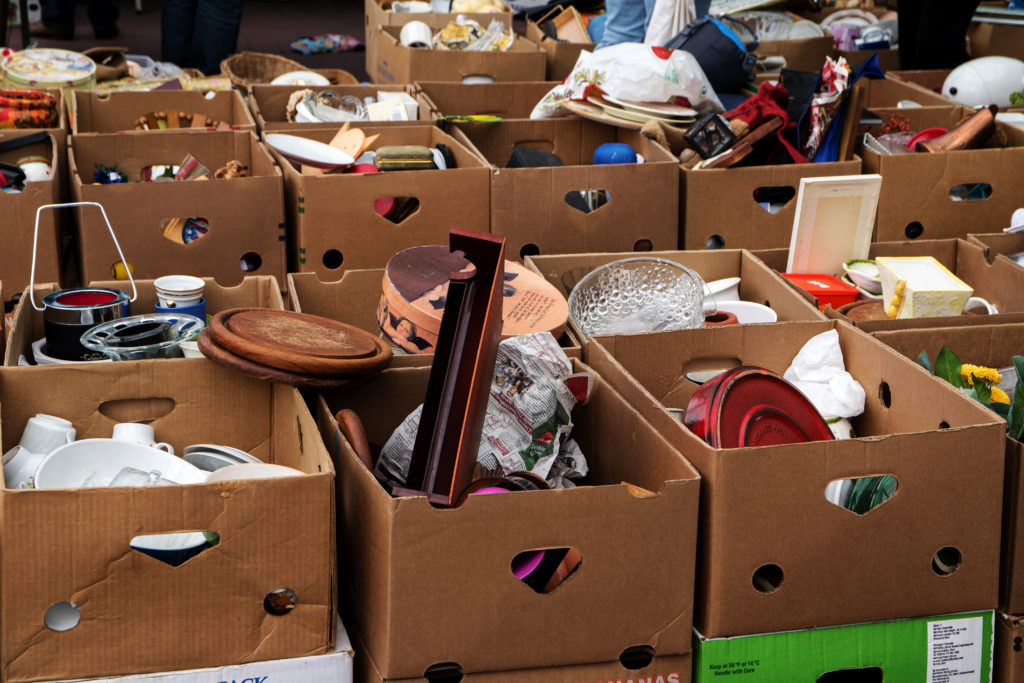
Stuck at home. You’ve had your morning coffee, read the gloomy newspaper or scanned your social media apps. You have something pressing to do but avoid it and mindlessly start shuffling papers on your desk.
You wander around aimlessly, straightening pictures, moving a pile of books from one surface to another, throwing out an obvious piece of trash. You know you’re barely making a dent but somehow it seems important in the moment.
You look around your home and feel the familiar pang of shame that comes from knowing your house is more than a “bit of a mess.” Books and knick-knacks piled two-deep on shelves. Your cabinets and drawers packed full with a lifetime of items that meant something to you once but now you can’t even remember where half of them came from.
Almost every surface covered with the residue of the week.
Don’t Go It Alone!
You look around at the 20 or 30 years of accumulated stuff. You wonder if you have the resources to hire a professional organizer who would somehow magically transform your home into a picture straight out of Real Simple Magazine. You know this is impossible now. Money is tight and you’ve just paid your property taxes or your son’s tuition or an unexpected medical bill from a procedure you had last year before something called Covid-19 stole your “normal” life.
Momentarily the thought disappears as your alarm reminds you it’s time for your weekly Zoom call.
During the meeting you happen to mention your desire to get decluttered and curiously ask if anyone else is feeling the same. All at once, hands shoot up in the air. You let out a sigh of relief and recognition. You are not alone in this struggle and that’s when it hits you. “Why not start a clutter support group?”
This is exactly what happened to C.J. Hayden, a business coach, trainer and author of six books including, the bestselling, Get Clients Now! A 28-Day Marketing Program for Professionals, Consultants, and Coaches.
The idea came to C.J. during a recent Zoom meeting she was conducting with her clients – mostly other self-employed people. C.J. casually mentioned she’d like to be more organized and asked if anyone else was experiencing the same thing.
“Half the hands in the room shot up” C.J. told me recently by phone. She then posed the question to the group, “Maybe we should form a pod? That’s how it started. It was totally spontaneous.”

Within a few days C.J. had come up with a group structure — action oriented, not just a support group – a name, The Decluttering Divas and a schedule. They meet virtually once a week on Monday mornings and keep their computer’s microphones and cameras turned on so everyone else in the group can “get the visceral sounds of decluttering.” C.J. gets the group going but it is strictly peer-support that keeps everyone on task.
Tame Your Inner Critic
Perhaps the biggest value of the group has been the way it helps silence everyone’s inner critic, including C.J’s.
“She tells me this is too big a job and I’ll never be able to complete it. But I keep telling her that as long as I break it down into manageable chunks, and have support, I really can.”
The group shares another bond – that of facing the many challenges of life as baby-boomers. Several of the group’s members juggle their lives and their businesses, often with competing responsibilities for aging parents, adult children and the self-imposed pressure of changing attitudes towards the things they own. For some, decluttering runs into direct conflict with their parent’s depression-era views of save everything
In C.J.’s case, that meant, among other things, coming across a collection of old hair accessories and incredulously wondering why she had kept them. “The last time I had hair long enough to wear hair ornaments was probably in the mid-90s!”
Join A Worldwide Movement
It turns out Decluttering Divas is not alone. A search of other decluttering groups on the popular Meetup.com website found 71 groups consisting of nearly 18,000 members in 62 cities across 16 countries around the world.
While it’s unlikely the Covid-19 pandemic, with more and more people being sequestered at home, lead to the phenomena of worldwide clutter groups, as well as popular topics such as minimalism, online selling, tiny houses, and home editing, it’s probably one of it’s few silver linings. Even C.J.s group has one participant from the United Kingdom.
The reasons people join a decluttering group are as varied as their stuff. In “Decluttering Divas,” one member was dealing with the clutter left behind by her parents who lived with her for many years but who have since moved on to retirement communities or passed away.
Another is an artist who wanted more time for her art and hobbies and was getting too distracted by her clutter.
For C.J. herself it came down to being able to be more productive at work as a busy entrepreneur who travels extensively as well as to be able to relax at home.
Even her husband, without prompting, caught the decluttering bug.
“One day I came out of my meeting and found a bunch of cups and glasses on the counter. He decided it was time to clear out a kitchen cabinet.” Together they got rid of most of them, offering them for free to neighbors through the popular site, Nextdoor.com
Applying what you already know to get organized
While not a professional organizer herself, C.J. had worked with a few in the past, and had read several books about organizing and several of her clients are professional organizers. Along the way, she’s learned techniques and strategies for decluttering but it’s been her coaching and group facilitation experience that turned her casual question into a satisfying reality.
When the group first met, C.J. posed three “focusing questions” to ensure each member had a real action-oriented purpose for being there.
The focusing questions asked members to set and share a specific and attainable goal, explain why they had chosen that goal and set a deadline for completing the goal. Members who could not set a realistic deadline were asked to scale back their goals until they could.
To keep it “manageable,” there are a total of 8 people in the group though other peer-lead groups around the country, according to MeetUp.com show as many as 600 members.
During meetings, members of the group share their goals and even post before and after pics. Offline the group shares or exchanges resources such as where and how to get rid of things, especially useful during the current health restrictions when many charities are not accepting or limiting their donation services.
Members even share links to organizing products they see online such as containers and bins.
Perhaps the biggest benefit of the group has been the fact each member understands what it’s like to feel overwhelmed by clutter and want to help each other.
“Having this group has meant I have support, camaraderie, and benevolent peer pressure from being surrounded by others on the same path.”
Lis McKinley is a Certified Professional Organizer®, Move Management Specialist and Owner of LET’S MAKE ROOM, LLC based in Oakland, California.



 Toys and Childhood Memorabilia
Toys and Childhood Memorabilia







